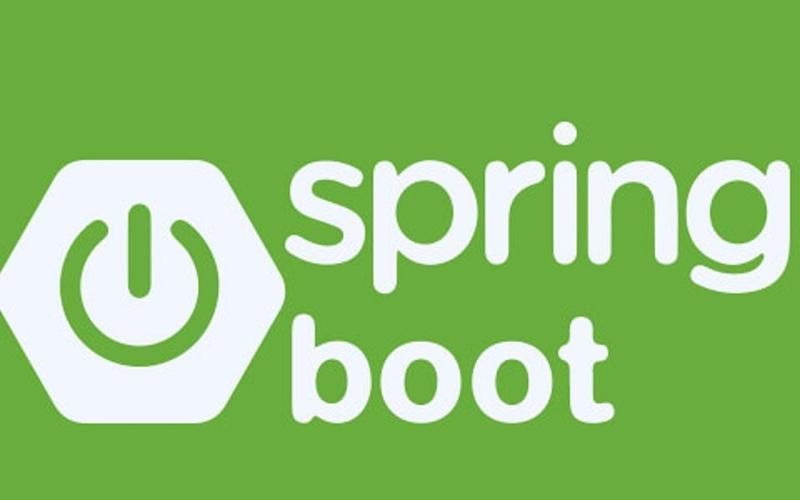
1.基本介绍
2.@PathVariable 路径参数获取信息
1.代码实例
1.index.html
<!DOCTYPE html>
<html lang="en">
<head>
<meta charset="UTF-8">
<title>Title</title>
</head>
<body>
<h1>基本注解</h1>
<hr/>
<a href="/monster/100/king">@PathVariable-路径变量:/monster/100/king</a>
</body>
</html>
2.ParameterController.java
package ***.sun.springboot.controller;
import org.springframework.web.bind.annotation.GetMapping;
import org.springframework.web.bind.annotation.PathVariable;
import org.springframework.web.bind.annotation.RestController;
import java.util.Map;
/**
* @author 孙显圣
* @version 1.0
*/
@RestController
public class ParameterController {
@GetMapping("/monster/{id}/{name}") //接受两个路径参数
public String pathVariable(@PathVariable("id") Integer id, @PathVariable("name") String name,
@PathVariable Map<String, String> map) { //这里的map指将所有的路径参数都放到map中
System.out.println("id:" + id + " name:" + name);
for (Map.Entry<String, String> entry : map.entrySet()) {
System.out.println("key:" + entry.getKey() + " value: " + entry.getValue());
}
return "su***ess"; //返回json给浏览器
}
}
3.测试
2.细节说明
- @PathVariable(“xxx”)必须跟{xxx}相对应
- 可以将所有的路径参数放到map中 @PathVariable Map<String, String> map
3.@RequestHeader 请求头获取信息
1.代码实例
1.index.html
<!DOCTYPE html>
<html lang="en">
<head>
<meta charset="UTF-8">
<title>Title</title>
</head>
<body>
<h1>基本注解</h1>
<hr/>
<a href="/requestHeader">@RequestHeader-获取请求头信息</a>
</body>
</html>
2.ParameterController.java
package ***.sun.springboot.controller;
import org.springframework.web.bind.annotation.GetMapping;
import org.springframework.web.bind.annotation.RequestHeader;
import org.springframework.web.bind.annotation.RestController;
import java.util.Map;
/**
* @author 孙显圣
* @version 1.0
*/
@RestController
public class ParameterController {
@GetMapping("/requestHeader") //获取请求头的信息
public String requestHeader(@RequestHeader("host") String host, @RequestHeader Map<String, String> header) {
System.out.println("host:" + host);
System.out.println(header);
return "su***ess";
}
}
3.测试
2.细节说明
- 请求头的信息都是以key - value的形式存储的
- 可以通过@RequestHeader(“xxx”)来获取xxx对应的value
- 也可以通过@RequestHeader Map<String, String> header将所有的key - value都封装到map中
4.@RequestParameter 请求获取参数信息
1.代码实例
1.index.html
<!DOCTYPE html>
<html lang="en">
<head>
<meta charset="UTF-8">
<title>Title</title>
</head>
<body>
<h1>基本注解</h1>
<hr/>
<a href="/hi?hobby=打篮球&hobby=踢球">@RequestParam-请求参数</a>
</body>
</html>
2.ParameterController.java
package ***.sun.springboot.controller;
import org.springframework.web.bind.annotation.*;
import java.util.List;
/**
* @author 孙显圣
* @version 1.0
*/
@RestController
public class ParameterController {
@GetMapping("/hi")
public String hi(@RequestParam(value = "name", defaultValue = "孙显圣") String name,
@RequestParam("hobby") List<String> list) {
System.out.println("name:" + name);
System.out.println(list);
return "su***ess";
}
}
3.测试
2.细节说明
- 请求参数是可以设置默认值的,使用defaultValue属性即可
- 请求参数还可以将同名的结果封装到List中
- 请求参数也可以使用@RequestParameter Map<String, String> map 将所有参数封装到map中,但是如果有同名的结果只会得到第一个,因为map的key是唯一的
5.@CookieValue cookie获取值
1.代码实例
1.index.html
<!DOCTYPE html>
<html lang="en">
<head>
<meta charset="UTF-8">
<title>Title</title>
</head>
<body>
<h1>基本注解</h1>
<hr/>
<a href="/cookie">@CookieValue-获取cookie的值</a>
</body>
</html>
2.ParameterController.java
package ***.sun.springboot.controller;
import org.springframework.web.bind.annotation.*;
import javax.servlet.http.Cookie;
import javax.servlet.http.HttpServletRequest;
/**
* @author 孙显圣
* @version 1.0
*/
@RestController
public class ParameterController {
@GetMapping("/cookie")
//这里可以设置required = false意为不是必须存在的,如果不存在则得到的值就为null
//如果后面的参数类型是Cookie,则会获取Cookie对象并封装到变量中
public String cookie(@CookieValue(value = "cookie_key", required = false) String cookie_value,
@CookieValue(value = "username" , required = false) Cookie cookie, HttpServletRequest request) {
//使用原生api获取cookies
Cookie[] cookies = request.getCookies();
for (Cookie cookie1 : cookies) {
System.out.println(cookie1);
}
System.out.println(cookie_value);
System.out.println("name:" + cookie.getName() + " value: " + cookie.getValue());
return "su***ess";
}
}
3.测试
2.细节说明
- @CookieValue可以根据后面要封装的参数的类型来获取指定的值,如果后面的类型是Cookie类型则会获取一个Cookie对象并封装进入,如果是String类型则会获取Cookie的value来进行封装
- 还可以通过Servlet原生api的request来获取所有的cookie
- @CookieValue中有属性required默认为true,意为必须存在,否则报错,如果设置为false,则如果获取不到则为null
6.@RequestBody 处理json请求,post请求体获取信息
1.代码实例
1.index.html
<!DOCTYPE html>
<html lang="en">
<head>
<meta charset="UTF-8">
<title>Title</title>
</head>
<body>
<h1>基本注解</h1>
<hr/>
<form action="/requestBody" method="post">
<input type="text" name="username"><br>
<input type="text" name="password"><br>
<input type="submit" value="submit">
</form>
</body>
</html>
2.ParameterController.java
package ***.sun.springboot.controller;
import org.springframework.web.bind.annotation.*;
/**
* @author 孙显圣
* @version 1.0
*/
@RestController
public class ParameterController {
@PostMapping("requestBody")
public String getRequestBody(@RequestBody String requestBody) { //获取请求体
System.out.println(requestBody);
return "su***ess";
}
}
3.测试
7.@RequestAttribute 请求域获取信息
1.代码实例
1.RequestController.java
package ***.sun.springboot.controller;
import org.springframework.stereotype.Controller;
import org.springframework.web.bind.annotation.GetMapping;
import org.springframework.web.bind.annotation.RequestAttribute;
import org.springframework.web.bind.annotation.ResponseBody;
import javax.servlet.http.HttpServletRequest;
/**
* @author 孙显圣
* @version 1.0
*/
@Controller
public class RequestController {
@GetMapping("/login")
public String login(HttpServletRequest request) {
//在Request域中存放一些信息
request.setAttribute("name", "sun");
request.setAttribute("age", 13);
//调用视图解析器,请求转发到/ok
return "forward:/ok";
}
@ResponseBody
@GetMapping("/ok")
public String ok(@RequestAttribute(value = "name", required = false) String name) { //使用注解来获取请求域中的信息并封装到参数中
System.out.println("name: " + name);
return "su***ess"; //返回json给浏览器
}
}
2.配置视图解析器 application.yml
spring:
mvc:
view: #配置了视图解析器
suffix: .html #后缀
prefix: / #前缀,指的是根目录
3.测试
8.@SessionAttribute session域获取信息
1.代码实例
1.SessionController.java
package ***.sun.springboot.controller;
import org.springframework.stereotype.Controller;
import org.springframework.web.bind.annotation.GetMapping;
import org.springframework.web.bind.annotation.ResponseBody;
import org.springframework.web.bind.annotation.SessionAttribute;
import javax.servlet.http.HttpServletRequest;
/**
* @author 孙显圣
* @version 1.0
*/
@Controller
public class SessionController {
@GetMapping("/login")
public String login(HttpServletRequest request) {
//在session域中设置信息
request.getSession().setAttribute("session", "session_value");
//调用视图解析器,请求转发到/ok
return "forward:/ok";
}
@ResponseBody
@GetMapping("/ok")
public String ok(@SessionAttribute(value = "session") String value) { //使用注解来获取session域中的信息并封装到参数中
System.out.println("session: " + value);
return "su***ess"; //返回json给浏览器
}
}
2.配置视图解析器(同上)
3.测试
9.复杂参数
1.代码实例
1.RequestController.java
package ***.sun.springboot.controller;
import org.springframework.stereotype.Controller;
import org.springframework.ui.Model;
import org.springframework.web.bind.annotation.GetMapping;
import org.springframework.web.bind.annotation.RequestAttribute;
import org.springframework.web.bind.annotation.ResponseBody;
import javax.servlet.http.HttpServletResponse;
import java.util.Map;
/**
* @author 孙显圣
* @version 1.0
*/
@Controller
public class RequestController {
@GetMapping("/login")
public String login(Map<String, Object> map, Model model, HttpServletResponse response) {
//给map封装信息
map.put("user", "sun");
map.put("job", "工程师");
//model封装信息
model.addAttribute("sal", 1000);
//结果最后都会封装到request域中
//调用视图解析器,请求转发到/ok
return "forward:/ok";
}
@ResponseBody
@GetMapping("/ok")
public String ok(@RequestAttribute("user") String user, @RequestAttribute("job") String job,
@RequestAttribute("sal") Integer sal) { //使用注解来获取请求域中的信息并封装到参数中
System.out.println("user:" + user + " job:" + job + " sal:" +sal);
return "su***ess"; //返回json给浏览器
}
}
2.测试
2.HttpServletResponse给浏览器设置cookie
1.代码实例
package ***.sun.springboot.controller;
import org.springframework.stereotype.Controller;
import org.springframework.web.bind.annotation.CookieValue;
import org.springframework.web.bind.annotation.GetMapping;
import org.springframework.web.bind.annotation.ResponseBody;
import javax.servlet.http.Cookie;
import javax.servlet.http.HttpServletResponse;
/**
* @author 孙显圣
* @version 1.0
*/
@Controller
public class RequestController {
@GetMapping("/login")
public String login(HttpServletResponse response) {
Cookie cookie = new Cookie("cookie_name", "cookie_value");
response.addCookie(cookie);
//调用视图解析器,重定向到/ok,不能使用请求转发,因为虽然响应给客户端cookie了,
// 但是由于是请求转发,第二个controller得到的是最开始的请求,那时候还没有cookie
return "redirect:/ok";
}
@ResponseBody
@GetMapping("/ok")
public String ok(@CookieValue("cookie_name") Cookie cookie) {
//获取cookie
System.out.println("key:" + cookie.getName() + " value:" + cookie.getValue());
return "su***ess"; //返回json给浏览器
}
}
2.测试


